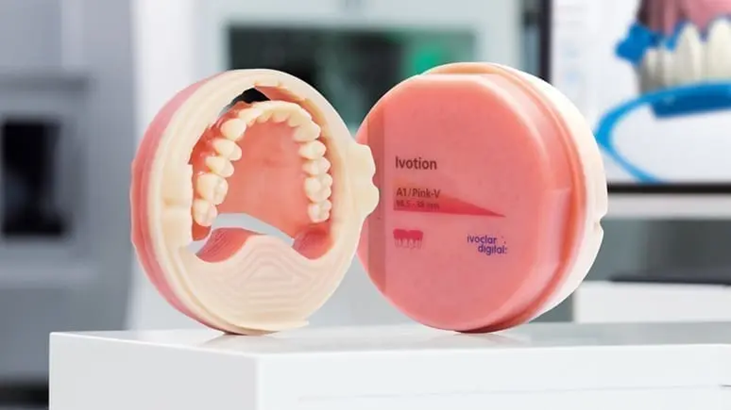

DENTURES

Dentures are removable dental appliances designed to replace missing teeth and restore the natural appearance and function of your smile. There are two main types of dentures:
Complete Dentures: These are used when all the teeth in a person's upper or lower jaw are missing. Complete dentures fit over the gums and are held in place either by suction or with the help of denture adhesives.
Partial Dentures: These are used when only some teeth are missing. Partial dentures are attached to the natural teeth with clasps and are designed to fill in the gaps created by lost teeth.
Dentures are typically made from materials such as:
Acrylic resin: Common for both complete and partial dentures.
Porcelain: Often used for the teeth in dentures, as it is more durable and looks more natural.
Metal: Some partial dentures have metal frameworks for added strength and support.
Improved appearance: Dentures restore a natural-looking smile and help prevent facial sagging due to missing teeth.
Better speech and chewing: Dentures improve the ability to chew food and speak clearly.
Enhanced confidence: Wearing dentures can help individuals feel more confident in social settings.
Comfort and fit: It can take time to adjust to wearing dentures. They may feel uncomfortable at first, and some people need multiple fittings.
Maintenance: Dentures need to be cleaned regularly to prevent stains, bad breath, and gum infections. They should be removed at night to give the gums a rest.
Dentures are often a practical and cost-effective option for people who have lost their teeth, though other options such as dental implants may be considered for those who seek a more permanent solution. If you’re considering dentures, it’s essential to consult with a dentist to determine the best choice for your needs.
TYPES OF DENTURES
There are several types of dentures, each designed to address specific needs based on the number of missing teeth and individual preferences. Here are the main types:

Conventional Complete Dentures: These are made after the gums have healed following the removal of teeth. They are usually ready about 8-12 weeks after tooth extraction, once the gums have healed and reshaped.
Immediate Complete Dentures: These are made in advance and placed immediately after the removal of the teeth. Since they are placed before the gums heal, they may require adjustments as the mouth changes shape during healing.
Partial dentures are used when some natural teeth remain in the upper or lower jaw. They consist of replacement teeth attached to a gum-colored plastic base, often with metal clasps that help secure the denture in place. Types of partial dentures include:
Cast Metal Partial Dentures: These are made with a thin, durable metal framework for better strength and support.
Flexible Partial Dentures: Made from a more flexible material, these dentures are designed for comfort and a more natural fit. They are often used when metal frameworks are not ideal.
These dentures are supported by dental implants rather than sitting directly on the gums. Dental implants are surgically placed into the jawbone, and the dentures are attached to them. Implant-supported dentures can be
:
Bar-retained dentures: The dentures are connected to a bar that is supported by several implants.
Ball-retained dentures: The dentures have ball-shaped attachments that fit into sockets on the implants.
These are similar to complete dentures but are designed to fit over a few remaining natural teeth or dental implants. Overdentures help preserve the jawbone and provide better support than traditional dentures, offering a more stable fit.

5. Flexible Dentures
Made from a flexible, lightweight plastic material (such as nylon), flexible dentures are comfortable, durable, and less likely to break. They are ideal for patients with allergies to metals or those who prefer a softer, more natural feel.
These are dentures that are made before teeth are removed. They are placed in the mouth immediately after tooth extraction. Since the jaw changes shape as it heals, immediate dentures may require relining or adjustments over time.
Single-day dentures, also known as same-day dentures, are dentures that are fitted and inserted on the same day as the initial appointment. They are a good option for patients who have recently had their teeth extracted or are looking to replace their existing dentures
Digital dentures are a modern advancement in denture fabrication, where digital technology is used in the design and manufacturing process. These dentures are created using computer-aided design (CAD) and computer-aided manufacturing (CAM) systems, offering greater precision, speed, and customization compared to traditional denture-making methods.

Faster Turnaround: Digital dentures typically take less time to create.
Precision Fit: Reduced risk of discomfort due to improved accuracy.
Enhanced Aesthetics: Better customization options for a natural look.
Long-Term Value: Digital records can be kept for easy future modifications or replacements.
Type of Denture | When It's Used |
Complete (Full) Dentures | For patients with no remaining natural teeth in upper or lower jaw |
Partial Dentures | For patients with some natural teeth remaining |
Implant-Supported Dentures | For patients with missing teeth who prefer the stability of implants |
Overdentures | For patients with a few remaining teeth or implants |
Snap-In Dentures | Similar to overdentures but snap into place onto implants/teeth |
Flexible Dentures | For patients needing a comfortable and flexible option |
Immediate Dentures | Placed immediately after tooth extraction (temporary solution) |
Each type of denture has unique benefits, and your dentist can help you choose the most suitable option based on your specific needs, lifestyle, and budget.
Digital dentures represent a significant step forward in denture technology, offering faster, more accurate, and customized results. They combine the advantages of modern digital technology with traditional denture needs, leading to better comfort, efficiency, and long-term outcomes for patients
